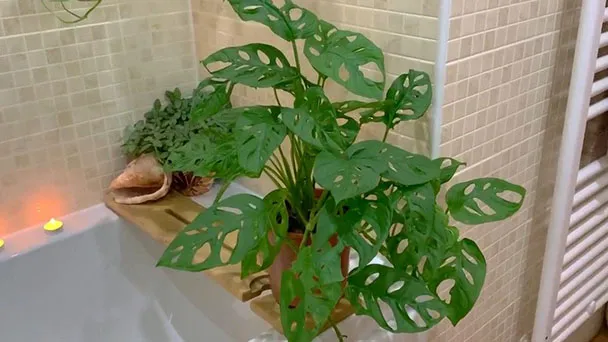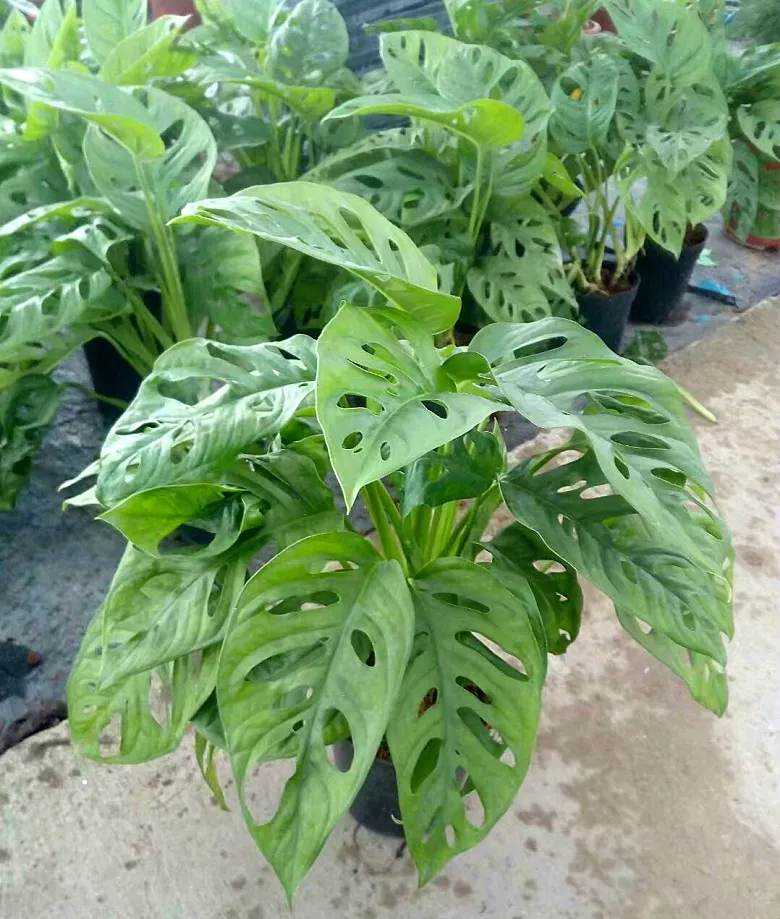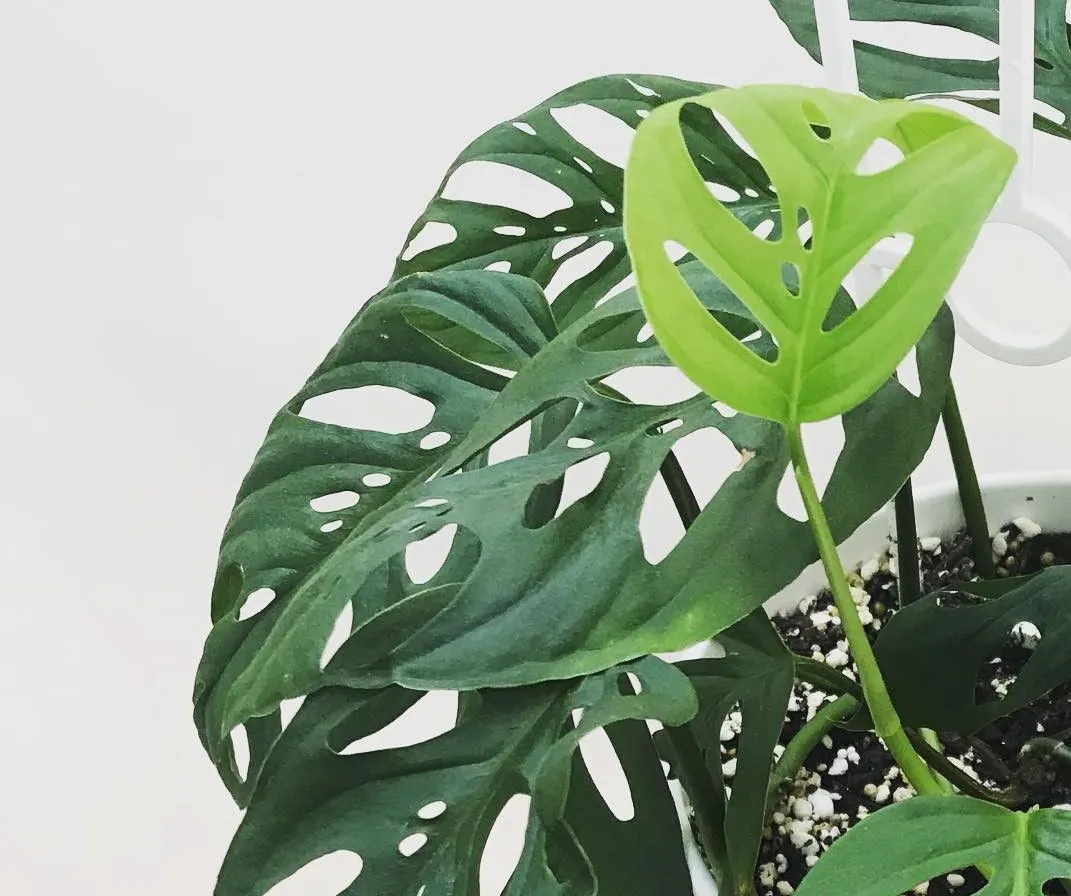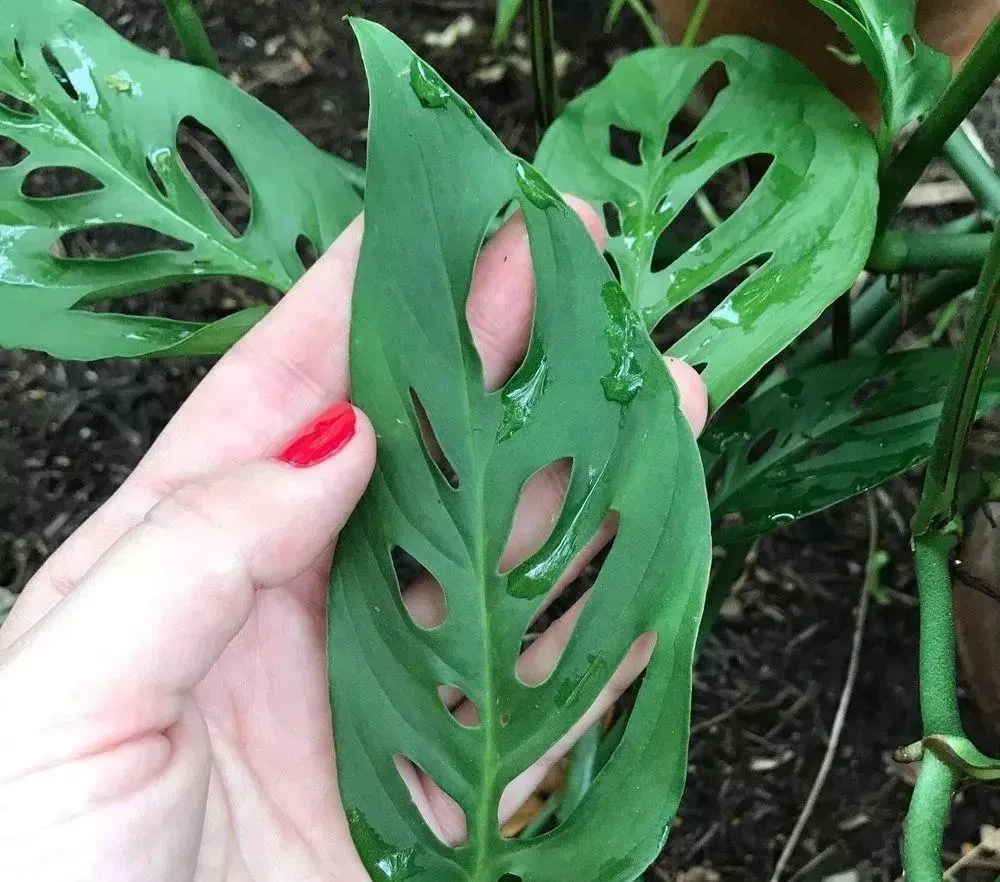Monstera Lechleriana Care Guide 2023
Written by Ivy
Jan 05 2023

The leaf edges of Monstera Lechleriana are complete, and holes of different sizes are distributed only in the middle of the leaves. The growth habits of Monstera Lechleriana are different from other Monstera species, so there are differences in maintenance methods.


When we change the basin of Monstera lechleriana, we can drag to have a look at the roots of Monstera lechleriana. The roots of Monstera lechleriana are very hypertrophic and fleshy. Therefore, it is best to choose the loose and breathable universal nutrient soil. And there are no intact roots in the soil below,
When Monstera lechleriana changes the basin, we have to wait until the basin soil is a little dry, then pour it with water, and put it in a warm and ventilated environment to slow the seedlings. (Read More: Monstera Root Rot - Signs & How to Treat)
This kind of monstera lechleriana disease mainly occurs on leaves. At the initial stage, the bacteria invaded from the leaf edge wound, and the leaves appeared grayish brown spots, with dark brown edges. In the later stage, the disease spots become one piece, rotting and dry. The leaves produce sparse black granules, which are the conidia of the pathogen.
Control method:
Once we find that the leaves of Monstera lechleriana have disease spots, we can remove them and burn them to avoid infecting other plants. When the disease occurs, spray 70% methyltobuzin 1000 times or 50% carbendazim 1000 times to kill it. During the period when the plant is infected with gray mold, we should also pay attention to insect control. Nymph damage and disease occur at the same time, which is more serious to Monstera lechleriana.
In the early stage of the onset of the monstera lechleriana disease, needle like yellow dots appeared on the front and back sides of the leaves, and then gradually expanded into light brown or brick red blisters, which spread and cracked and scattered rust colored powder. Slight rusty spots appear on the leaves, and serious rust spots cover the leaf surface, causing local or whole leaves to turn yellow, resulting in withering and falling off, weakening the growth of Monstera lechleriana. The rust of Monstera lechleriana not only damages the leaves of the plant, but also the stems, causing symptoms similar to the leaves.
Control method:
We should strengthen the maintenance of Monstera lechleriana and remove the diseased leaves in time.
Read More:
Monstera Lechleriana Quick InfoMonstera Lechleriana Care in DetailMonstera Lechleriana WateringMonstera Lechleriana SoilMonstera Lechleriana LightMonstera Lechleriana TemperatureMonstera Lechleriana HumidityMonstera Lechleriana FertilizerMonstera Lechleriana PruningMonstera Lechleriana RepottingMonstera Lechleriana Pest & Disease ControlMonstera Lechleriana PropagationMonstera Lechleriana Propagation from CuttingMonstera Lechleriana Propagation from Layering
Monstera Lechleriana Quick Info
| Botanical/Scientific Name | Monstera Adansonii Lechleriana |
| Common Name | Monstera Lechleriana |
| Uses | Indoor houseplant |
| Origin | Central America |
| Light Care | Bright filtered sunlight |
| Soil Care | Well-draining and not excessively wet |
| Temperature Care | 55 to 80°F (12.7 to 26.7 C) |
| Humidity Care | 40-50% minimum humidity |
| Watering | Medium watering |
| Pruning Care | Prune off any damaged or dying leaves |
| Fertilizer Care | Once every two months |
| Propagation | Stem cuttings |
| Toxic | Toxic |
Monstera Lechleriana Care in Detail

Monstera Lechleriana Watering
Monstera lechleriana needs sufficient water during the growth period. We should water it frequently to keep the basin soil moist, but do not accumulate water. If it is kept outdoors, it needs to be protected from rain in plum rain season, or timely drain water and strengthen ventilation after rain, so as to make the water evaporate faster. monstera lechleriana can be watered less in winter to dry the soil properly.Monstera Lechleriana Soil
When we breed Monstera lechleriana, we can mix rotten leaf soil, vermiculite, peat soil and garden soil to prepare soil, which can ensure the looseness and fertility of the soil and is conducive to growth.Monstera Lechleriana Light
Compared with ordinary varieties, Monstera Lechleriana has stronger negative tolerance and is more afraid of sun exposure. If it is placed in the sunny place for 1-2 hours, its leaves will be burned. Usually from May to September, it needs to be shaded all the time. We can put Monstera lechleriana in the environment with scattered light. Dark conditions will make its leaves greener and promote the formation of holes in Monstera lechleriana.Monstera Lechleriana Temperature
Monstera lechleriana likes high temperature environment. When the temperature is between 20-30 ℃, its growth speed is relatively fast. The cold tolerance of the plant is very weak. It must be kept above 10 ℃ in winter, otherwise it will be frostbitten. Therefore, before winter, we need to move Monstera lechleriana to a warm place indoors, or put it in a bag to keep it cold and warm.Monstera Lechleriana Humidity
Monstera lechleriana likes warm and humid environment very much. It is afraid of low temperature. The minimum curing temperature shall be kept above 5 degrees, otherwise it will be frostbitten. If the curing temperature exceeds 33 ℃, the growth of Monstera lechleriana will slow down or even stop. As long as the warm and humid environment is maintained, it will grow very well.
Monstera Lechleriana Fertilizer
Monstera lechleriana usually needs to supplement nitrogen fertilizer once a month, which can promote the growth of branches and leaves. If the plant is short of fertilizer, the leaves will turn yellow and the holes will be reduced. In addition, pay attention to the amount of fertilizer. If too much nitrogen fertilizer will cause the growth of monstera lechleriana and affect its beauty. (Read More about saving yellow leaves of Monstera.)Monstera Lechleriana Pruning
If there is a branch with a main stem on the Monstera lechleriana, the stem is 3 cm thick, and a bud bag has grown on the branch of Monstera lechleriana, we can trim it at this time. We can prepare a faster knife to cut its leaves and branches 2 to 3 cm away from the base of Monstera lechleriana. We can cut off the high branches at the top with a knife. If this Montara lechleriana pruning method is adopted, because the nutrition will be dispersed from top to bottom, its leaves can grow more dense than before, and the plant type will be more beautiful, but at the same time, we should also pay attention to the problem of excessive growth of branches, stems and leaves.Monstera Lechleriana Repotting
We need to choose a deeper basin for monstera lechleriana repotting because it grows faster. If we choose a shallow basin, the branches and leaves are easy to sag naturally after growing faster. It is best to choose a deeper basin. Therefore, we suggest that we choose a pottery basin with better air permeability because the lower hole of the pottery basin is very large, Because a tile is paved with a layer of large ceramsite at the bottom and lower layer, the air permeability and water permeability are super good!When we change the basin of Monstera lechleriana, we can drag to have a look at the roots of Monstera lechleriana. The roots of Monstera lechleriana are very hypertrophic and fleshy. Therefore, it is best to choose the loose and breathable universal nutrient soil. And there are no intact roots in the soil below,
When Monstera lechleriana changes the basin, we have to wait until the basin soil is a little dry, then pour it with water, and put it in a warm and ventilated environment to slow the seedlings. (Read More: Monstera Root Rot - Signs & How to Treat)

Monstera Lechleriana Pest & Disease Control
- Monstera lechleriana gray spot
This kind of monstera lechleriana disease mainly occurs on leaves. At the initial stage, the bacteria invaded from the leaf edge wound, and the leaves appeared grayish brown spots, with dark brown edges. In the later stage, the disease spots become one piece, rotting and dry. The leaves produce sparse black granules, which are the conidia of the pathogen.
Control method:
Once we find that the leaves of Monstera lechleriana have disease spots, we can remove them and burn them to avoid infecting other plants. When the disease occurs, spray 70% methyltobuzin 1000 times or 50% carbendazim 1000 times to kill it. During the period when the plant is infected with gray mold, we should also pay attention to insect control. Nymph damage and disease occur at the same time, which is more serious to Monstera lechleriana.
- Monstera lechleriana rust
In the early stage of the onset of the monstera lechleriana disease, needle like yellow dots appeared on the front and back sides of the leaves, and then gradually expanded into light brown or brick red blisters, which spread and cracked and scattered rust colored powder. Slight rusty spots appear on the leaves, and serious rust spots cover the leaf surface, causing local or whole leaves to turn yellow, resulting in withering and falling off, weakening the growth of Monstera lechleriana. The rust of Monstera lechleriana not only damages the leaves of the plant, but also the stems, causing symptoms similar to the leaves.
Control method:
We should strengthen the maintenance of Monstera lechleriana and remove the diseased leaves in time.
Monstera Lechleriana Propagation

Monstera Lechleriana Propagation from Cutting
For Monstera lechleriana propagation from cutting, we can choose branches with strong growth, with a length of about 10-15 cm. After cutting, remove the upper leaves and leave only the two at the top, which can reduce water evaporation. After treatment, insert Monstera lechleriana into the matrix, control temperature and moisturize, and take root in about a month. It can also be cut with aerial rooting stems and vines, and the survival rate is also relatively high.Monstera Lechleriana Propagation from Layering
Monstera lechleriana propagation from layering is usually carried out in spring or summer. It has strong germination ability in peak growth season, can take root faster and improve the survival rate. This method of Monstera lechleriana propagating is also very simple. We bury the creeping stems in the matrix and take root in about two or three weeks. After the root growth is stable, we can cut them from the mother plant and plant them separately.Read More:
- Monstera Borsigiana VS Monstera Deliciosa
- How to Grow and Care for Split Leaf
- How to Grow and Care for Monstera Obliqua Plant
- Philodendron Monstera Care & Propagation
- Rhaphidophora Tetrasperma (Mini Monstera) Care Guide
- Rhaphidophora Tetrasperma (Mini Monstera) Profile
- Why My Monstera Leaves Curling - 8 Reasons And How to Fix
- How to Save My Overwatered Monstera
- Why Does My Monstera Have Yellow Leaves
Latest Updated
- Benefits of Bugleweed - 7 Science-backed Health Benefits
- Bugleweed Dangers & Side Effects - Is It Poisonous?
- How to Plant Evergreen Trees - What You Should Know
- When to Plant Evergreens - Grow Guide for Evergreen Trees
- 12 Wonderful Evergreen Shrubs for Your Garden
- 12 Popular Evergreen Plants with Pictures for Beginners
- When And How To Prune A Lilac Bush Like a Pro
- How to Grow & Care for Lilac Vine (Hardenbergia Violacea)
- Japanese Lilac Tree (Syringa Reticulata) Care & Propagation Guide
- Shumard Oak Pros and Cons - What to Know
Popular Articles
- Winter maintenance of Antirrhinum Majus
- How to Grow Terminalia Mantaly Tree
- How to Grow and Care for Crossostephium Chinense
- How to grow Antirrhinum Majus in spring
- Peristeria Elata (Dove Orchid) Profile: Info & Care Guide
- Underwatered Snake Plant (Sansevieria Trifasciata) - Signs And How To Fix
- How to Care for Brazilian Jasmine Plant (Mandevilla Sanderi)
- How to Grow & Care for Graptopetalum Purple Delight in Summer
- Rosa Chinensis (China Rose): Plant Growing & Care Tips
- How to Care for Baby Sun Rose (Aptenia Cordifolia)